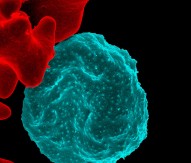
Importance of mouse genome proven
A study part-funded by the European Research Council (ERC) has confirmed the scientific benefits of using mice during experiments following an analysis of the animal’s genes.
The research, undertaken at Stanford University School of Medicine in the United States, analysed more than 100 mouse cell types and compared them to those found in the human genome. The researchers discovered that basic principles of how genes are controlled in mice and humans are similar, demonstrating the importance of mice in such clinical research.
However, the scientists also found that the gene expression in the tissues from the mice were more similar to their animal counterparts compared to humans. For example, a mouse liver and mouse kidney, compared to a human liver.
Speaking about the Mouse ENCODE project (a part of the study), itself funded and co-ordinated by the National Human Genome Research Institute, Professor Michael Snyder, chair of genetics at Stanford University, said: “At the end of the day, a lot of the genes are identical between a mouse and a human, but we would argue how they’re regulated is quite different. We are interested in what makes a mouse a mouse and a human a human.
“The mouse is the premier organism for modelling human disease and many other things – a lot of what we know about human biology does come from the mouse. The genome is what controls everything at some level. We’re interested in trying to understand the basic processes about how they’re similar or different across some of the most important species people are studying. It’s just fundamentally important.”
Mice are commonly used in scientific experiments and drug discovery, and it is hoped that the new research can help scientists better understand how the results found in in vivo can translate to humans.
The research results are published in the journal Nature.






